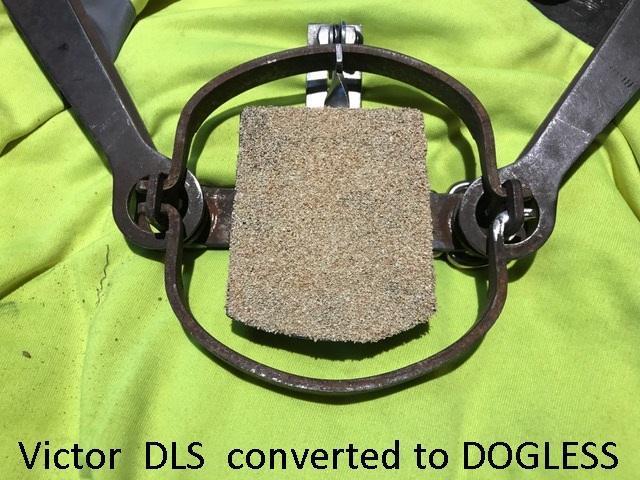I use #3 Montana's right out of the box, basically, all of the time. I de-grease, rinse off, boil in log wood dye.
I set them once at my shop, and adjust the pan to be lower, if needed. It's usually 2-3 per dozen, that need a slight tweek.
Then, I go set them. NO filing. I use stiff screen, which keeps dirt from going under the pan. I don't use anything under the pan.
I put 1/2" dirt or waxed dirt, coal shale, pine tree duff, sand, or whatever type of soil I'm using over the trap.
If I want a little heavier pan tension, I might position the pan on the jaw so that it comes in contact with a little more jaw,
I've used these type of traps for 35 years now. I've been around 100's of people that use them.
I've had countless conversations with people, about the beauty of them being the SIMPLICITY of using them.
You don't have to overthink traps like the #3 Montana. But, I know people that tend to do that.
Not all, but most of the over thinkers have the smallest piles of fur in the end.
Ask a guy that's caught 2-300 predator in a few months in foothold traps, and usually their comment on pan tension is about 5 seconds. Most realize the variables, and just settle on 2 1/2 -4 pounds. Any more calculating and second guessing is a waste of time in my opinion.
I went on a friends trap line a few weeks ago. He was using another version of a dog-less trap.
I won't say which brand for obvious reasons. After the first few catches, I started doing the remakes for him, while he was dispatching the coyotes.
I was shocked at how hard it was to get the mud and other frozen stuff out from under the pan. Levers needed tweeked a lot, and some I could hardly get reset. Pan tension was very hard to guess, because of all the extra stuff being full of mud, AFTER a catch in real trap line conditions. I deemed them not 'user friendly' by the end of the day, and I assure you I was being very objective. I'm way more concerned with catching coyotes than I am will selling traps.
My thought was that the people that designed them were trying to appeal to some trappers' need to adjust and play with traps, NOT catch fur. I came away glad that I deal with the people that I do. Oh, and his partner did have one in a #3 Montana that he'd just set. After seeing the difference, they ordered more. A lot more. Real life trapping calls for traps that work, and work without babysitting them.
Have a great year, and I hope to see some of you this summer somewhere.




